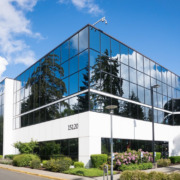AI-Enabled Cameras For Enhanced Digital Evidence
With 15.8 surveillance cameras for every 100 individuals, the US is considered a highly monitored country—the second-most surveilled, in fact, standing right behind China. But despite the controversy that typically surrounds cctv ip camera and their use in public spaces, their security benefits can’t be ignored.
However, in recent years, technology and law experts have claimed that the majority of cameras installed for security purposes right now are too outdated. These experts have been pushing for AI-enabled cameras for enhanced digital evidence.
Here’s everything you need to know about these.
What Are AI-Enabled Cameras
AI refers to artificial intelligence, a fascinating branch of computer science. It uses machine learning and focuses on teaching a computer or machine to think and act as a human would through a clever simulation of intelligence and reasoning processes.
Appliances, including AI cameras, are built differently than other machines. They aren’t coded to perform specific tasks but are instead built with AI features that help them learn and adapt to different patterns and behaviors. So, AI cameras are best described as cameras that utilize AI power to handle digital images and videos.
How Do AI-Enabled Cameras Work
AI-enabled cameras have a very comprehensive framework. They constantly send raw data to a recorder, where it’s then processed through an AI layer to produce a meaningful image or video.
Additionally, it’s important to understand that there are two different types of AI cameras; rule-based and self-learning. Rule-based cameras are fed with specific rules and images that the camera can use as references. These can be specific angles, movements, or postures. If the camera detects anything similar in its range, it will act in a specific way. For instance, if there is a specific entry point for a public space that is not supposed to be accessed after hours, the AI-enabled camera installed in the space will send alerts if it detects any activity in its range.
Self-learning AI cameras are distinctly different from rule-based ones. They rely on behavioral analytics software to gradually learn the normal behavior in an area. Through this self-learning mechanism, they’re eventually able to create their own understanding of expected behavior, including the color, speed, and size of specific objects. It tags normal objects and patterns and sends alerts when it observes anything outside its self-learned definition of normal.
Specific AI Features That Help Produce Enhanced Digital Evidence
AI-powered cameras support computational photography. This type of photography comprises various technologies and processes that mimic human characteristics, such as face recognition, voice recognition, machine learning, and voice-to-text features.
Here are some features of AI-enabled cameras that help with enhanced digital evidence.
Red Eye
Auto red-eye features are very common, and many people may not even realize that they count as an AI feature. In fact, they are one of the most basic AI programs and are part of most modern cameras. An AI camera can observe an image to see if a subject has red eyes and take the necessary steps to rectify the issue in-camera.
Facial Recognition

Facial recognition has been hailed as one of the most critical AI features in cameras. It was a ground-breaking innovation initially used to figure out the focal point in a given picture. But now, it can do more than just focus on a specific face. It can separate the subject from the background by creating shallow depth in an image. This is an incredibly helpful feature in AI cameras for enhanced digital evidence.
Subject Recognition
Subject recognition is simply an advancement of the facial recognition feature. It helps you focus and search for specific subjects and not just faces.
Zoomed and Enhanced Image
Zoom and enhance features that have always had you on the edge of your seats in crime movies and thrillers have now made their way into AI cameras. This feature allows AI cameras installed for surveillance to turn pixelated images into clear, recognizable pictures.
Why Are These Important for Public Spaces?

Regular CCTV cameras have been used as crime deterrents in private and public spaces for a long time. They help keep criminals at bay while reducing fear in the masses. But that being said, very often, CCTV cameras fail to prevent crimes and help little in the investigation later on.
AI cameras used for surveillance are different, though. They store the data to be reviewed later (like regular CCTV cameras), but they can also send real-time alerts when needed. This helps curb the crime rate significantly by enabling quicker response times, especially where public spaces are involved.
Some of these AI cameras may also offer object tracking, automatically tracking an already detected risk while sending out the alert. Some other ways in which AI-enabled cameras help in public spaces are through:
- Two-way audio features—allow security personnel to communicate with on-ground teams and also speak directly to intruders.
- They may allow pre-recorded audio statements to be played at intervals for the public.
- The facial recognition features can help to identify and track criminals or even victims.
- Subject recognition features can help in public spaces to ensure people follow government rules like wearing masks, for instance!
Do AI Enabled Cameras Offer More Accurate Surveillance?

AI cameras aren’t manually operated, which essentially means there is no room for human error with these cameras. This results in better, more accurate surveillance.
Additionally, it’s worth considering that a traditional CCTV camera’s view may be compromised due to many things, including bad weather. AI cameras, on the other hand, have an impartial view and can detect through hazards more efficiently.
The cameras powered by artificial intelligence also have features that work together to produce enhanced digital evidence in case of a security breach. Needless to say, AI-enabled cameras are must-haves for residential and commercial properties and public spaces like public schools, hospitals, and parks.
If you’d like to learn more about AI security surveillance systems, reach out to us at Max Video & Security. We offer security systems for companies and security and surveillance solutions for public spaces.
Give us a call to learn more.











